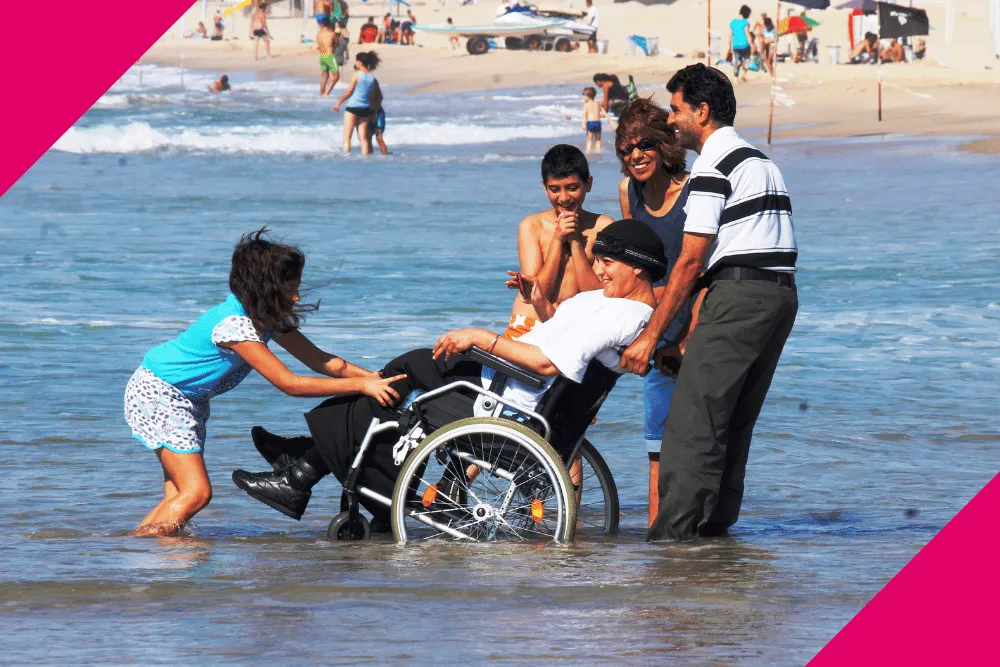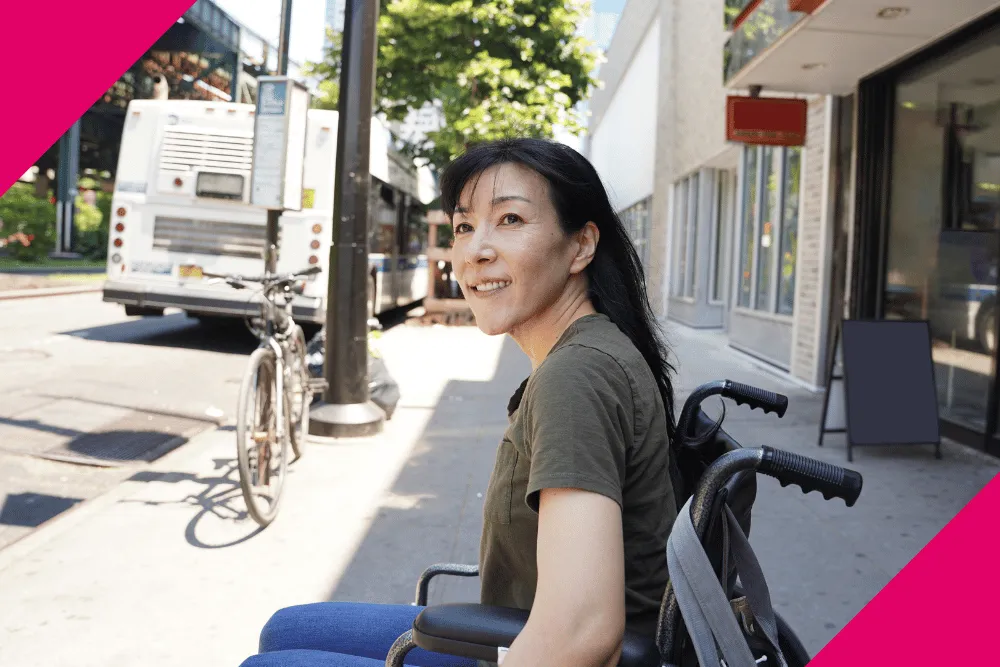- Marketing Services
Ready to grow your NDIS business?
- Provider Directory
Looking for SIL and SDA accommodation?
- Contact
- 1300 87 00 27
Looking for SIL and SDA accommodation?
Living with a permanent disability brings many challenges. These can be mental, physical, or financial. If you can’t work, these issues may feel too much to handle. But there’s good news. Australia has a kind system to help out. It’s called the Disability Support Pension (DSP). The government pays this every two weeks. The DSP is there to help people with lasting disabilities who can’t work. It offers financial support and some peace of mind.


The Disability Support Pension is a payment provided by the Australian Government to individuals who have a permanent disability that hinders their ability to work. The amount of pension you can claim depends on various factors, such as age, relationship status, income, and assets.
Payment rates for Disability Support Pension depend on age, children in care, income, and the assets test. The assets test evaluates the total value of various asset types to determine eligibility and payment amounts.
Rates are updated twice a year.
Maximum payment rates range from $1,096.70 to $1,653.40 per fortnight for those 21 or older with or without children.
Rates for those younger than 21 without dependent children range from $548.80 to $792.50 per fortnight.

The Disability Support Pension is a fortnightly payment provided by the Australian Government to individuals with a permanent disability that significantly impacts their ability to work. It aims to offer financial support and peace of mind to those who cannot fully participate in the workforce due to their condition.

To be eligible for the DSP, you must:

The Disability Support Pension (DSP) payment rates depend on your situation. The rates are updated on 20 March and 20 September each year for individuals who are 21 and older, with or without children, or younger than 21 with a child in their care. On 1 January of each year, the rates are updated for those younger than 21 without children. Your or your partner’s income and assets may also affect the payment rate.
For individuals who are 21 or older with or without children, or younger than 21 with a child in their care, the maximum basic rate per fortnight is as follows:
Single: $1,002.50 (basic rate) + $80.10 (Pension Supplement) + $14.10 (Energy Supplement) = $1,096.70 total
Couple each: $755.70 (basic rate) + $60.40 (Pension Supplement) + $10.60 (Energy Supplement) = $826.70 total
Couple combined: $1,511.40 (basic rate) + $120.80 (Pension Supplement) + $21.20 (Energy Supplement) = $1,653.40 total
Couple each separated due to ill health: $1,002.50 (basic rate) + $80.10 (Pension Supplement) + $14.10 (Energy Supplement) = $1,096.70 total
The maximum pension supplement is an additional payment that helps cover the cost of living and is included in the total payment amount.
For individuals younger than 21 without dependent children in their care, the payment rates vary depending on whether they are assessed as dependent or independent. The rates include the Youth Disability Supplement but do not include the Pharmaceutical Allowance and Energy Supplement. The maximum rates per fortnight are as follows:
Single, younger than 18, and dependent: $548.80
Single, younger than 18, and independent: $792.50
Single, 18 to 20, and dependent: $608.70
Single, 18 to 20, and independent: $792.50
A couple, and younger than 21: $792.50

If you are eligible for the Disability Support Pension, you may also be eligible for supplementary payments, including:
Pension Supplement: Helps cover expenses like utilities, phone bills, internet, and medication.
Energy Supplement: Assists with energy costs.
These supplementary payments are part of broader income support payments, which also include other aids like JobSeeker and Carer Payment. Meeting the income and assets tests is crucial for accessing these financial supports, especially for specific populations such as First Nations people.

The amount of money a person gets from the Disability Support Pension (DSP) can change based on their income limit. This includes money from all places, like savings and pension funds for older people. A method called deeming works out how much money someone gets from their savings. People getting DSP can work too, but there are rules they must follow. There’s a maximum amount of money and belongings you can have before it affects your DSP amount. But if someone is blind and doesn’t change, they don’t have to worry about the earnings test unless they’re also getting help to pay rent.
Income support is crucial for DSP recipients, particularly among First Nations people and other Australians. Challenges in identifying Indigenous individuals in data collection impact the reporting of income support receipt, especially among older populations.
Standard income rules for most pensioners include a $0 reduction for single person incomes up to $204 per fortnight, with a $0.50 reduction for each dollar over $204; couples have a $0 reduction up to $360 combined income per fortnight, with a $0.50 reduction for each dollar over $360.
Transitional income rules apply to certain DSP recipients: those under 21 without dependent children, with different rates reducing pensions by $0.40 instead of $0.50 for each dollar over the threshold.
Transitional rate pensioners can earn an extra $24.60 per fortnight for each dependent child without affecting their pension; couples both receiving a pension can earn an extra $12.30 each per child.
Cut off points for income exist, beyond which no pension is paid for the fortnight; these points vary based on age, marital status, and whether the recipient lives in Australia or receives Rent Assistance or Work Bonus.

The cut-off point for receiving payment in a fortnight depends on factors such as Rent Assistance or Work Bonus. It may be higher for couples living together or lower for those not living in Australia.
Individuals experiencing severe financial hardship, despite owning significant assets that cannot be easily liquidated, may still qualify for assistance if their accessible funds and income are low enough to meet the criteria.
Income cut-off point for a single individual aged 21 or older is $2,397.40
For a couple living together, the combined income cut-off point is $3,666.80
For a couple living apart due to ill health, the combined income cut-off point is $4,746.80
There are different income cut-off points for individuals aged 18 to 20, single with no children at home ($1,448.20) and individuals aged 16 to 17, single with no children at home ($1,327.00)
The income cut-off point for individuals aged 16 to 20, single with no children and independent is $1,820.80
For a couple aged 16 to 20 with no children, the combined income cut-off point is $3,580.00

To apply for the DSP:

If you are deemed capable of working more than 15 hours per week or retraining for another job, you may not be eligible for the Disability Support Pension. However, there are other options available to assist you in finding employment:
Jobseeker Payment: If you are currently looking for work or recovering from an injury/illness and cannot work temporarily, you may be eligible for this payment.
Disability Employment Services (DES): DES is a government-funded program that helps individuals with disabilities find employment and provides support in the workplace. Services include career advice, job search assistance, resume writing, interview preparation, and access to funding for various work-related needs.
Carer Payment: If you provide continuous care for someone with a disability or the elderly, you may be eligible for the Carer Payment. This financial support is crucial for caregivers who need to manage their caregiving responsibilities while ensuring they receive adequate support.

You must inform Services Australia of any significant changes in your circumstances, such as changes in your income, assets, living arrangements, or improvement in your medical condition. Failure to do so could result in overpayments that you’ll need to repay.

Yes, there’s a special provision for people with a terminal illness. If you have a terminal condition and a life expectancy of two years or less, you may be eligible for fast-tracked DSP access under the Terminal Illness provision.

Yes, you have the right to appeal. First, you can ask for a review by an Authorised Review Officer (ARO). If you’re still unsatisfied with the outcome, you can apply to the Administrative Appeals Tribunal (AAT) for an independent review.

Generally, you can’t receive the DSP and another income support payment simultaneously. However, you may be eligible for additional supplements or allowances. If you’re receiving compensation payments, this may affect your DSP eligibility or rate.

Living with a permanent disability can present significant challenges, particularly when it comes to financial stability. The Disability Support Pension in Australia is an Australian Government payment that aims to provide crucial financial assistance to individuals facing these circumstances. By understanding the eligibility criteria, payment rates, supplementary payments, and available support for employment, individuals can better navigate their options and access the necessary support they need.
ProviderHQ is an NDIS provider directory by AdTuna.
For the most accurate and up-to-date information, please visit the Services Australia website.






We are a full-service digital marketing agency specialising in results-driven marketing strategies. We work with businesses from diverse sectors, including NDIS providers, to drive measurable results from digital marketing campaigns. Whether you’re a new provider looking to build an online presence or an established provider looking to grow and scale, we can help.